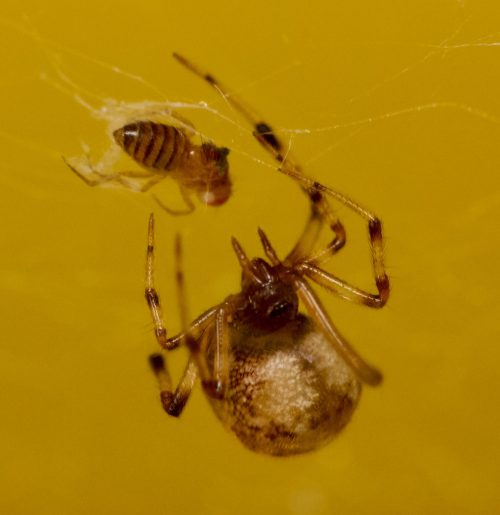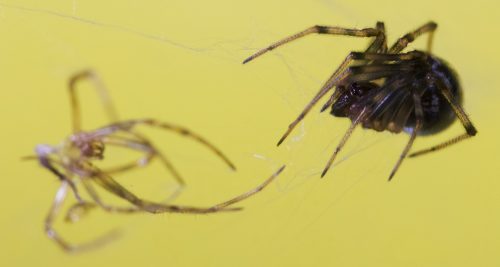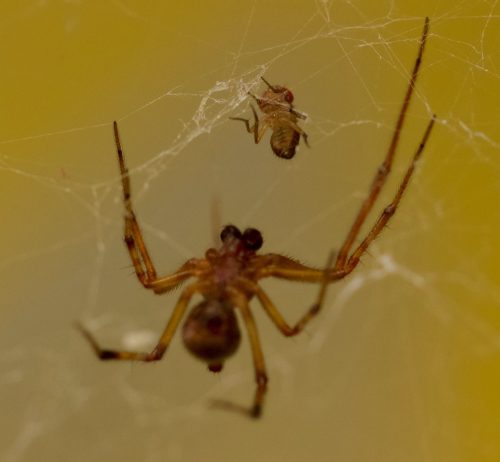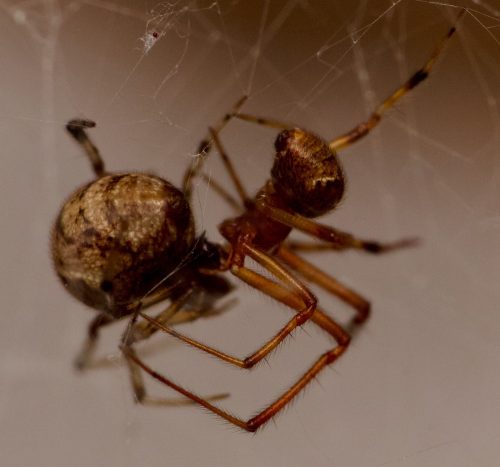I’m back! I survived my trek to the lab! It wasn’t as bad as I made it sound — the wind is biting, and the snow is coming down sideways, but it’s fairly light so far — so, except for the wolves and the yeti that tried to block my path, it was a reasonably easy trip.
There were reasons I was eager to go in. I’ve been getting anxious, because I’ve got all these new generation spiders, and they’re all virgins because of the shortage of males. I need them to lay eggs! I’ve got new students who want to work with me this semester, and it’s hard to do developmental biology with a bunch of virginal female spiders not producing embryos for us.* That one pair mated yesterday was a promising start, so there were a few things I wanted to do.
- See if Yara had produced an egg sac. She hadn’t, but there were signs that she was nesting, with some debris pulled up into her favorite corner (which makes me think she might be Parasteatoda tabulata, too.)
- Make sure her current partner, Chad, hadn’t been eaten. He was fine.
- Feed her some more, both to make her less likely to eat the male, but also to fuel a little more egg production. Mission accomplished.

Does she look plump to you? She does to me, a little bit. Also her abdomen is paler than it was yesterday, I think. Come on, mama!
*There are some behavioral experiments we could do, but really, development is where my brain is at. We’ll see what interests the students.











